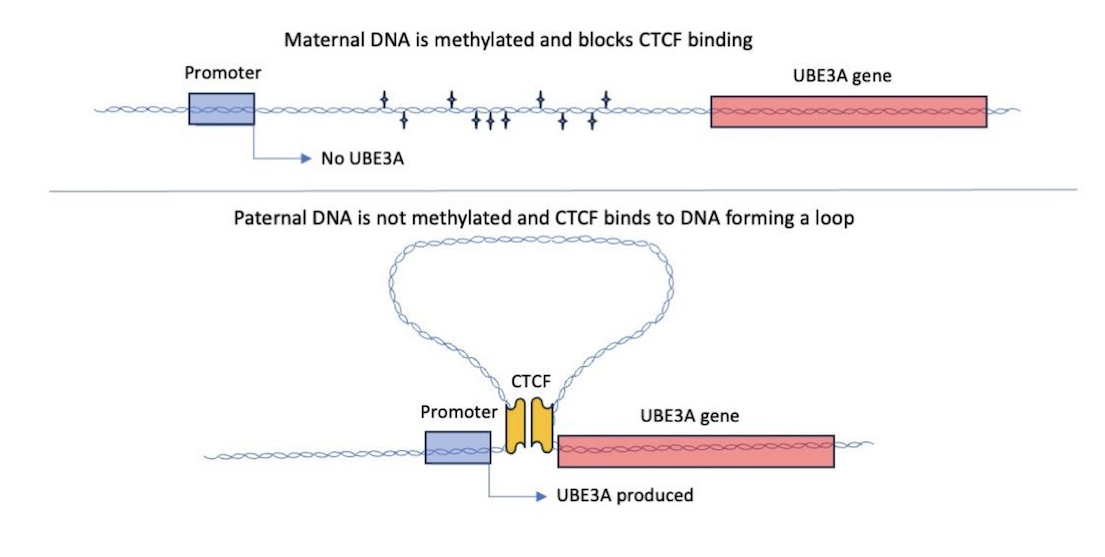Integration of CTCF Loops, Methylome, and Transcriptome in Differentiating LUHMES as a Model for Imprinting Dynamics of the 15q11-q13 Locus in Human Neurons
Genes are the fundamental units of heredity, composed of DNA sequences that encode instructions for building proteins and regulating function within the body. Epigenetics, on the other hand, refers to changes in gene expression (protein made from that gene) that occur without altering the DNA sequence. Paternal UBE3A is not produced due to a process called imprinting, which is an epigenetic alteration to the DNA that silences the paternal gene. This new publication explores how UBE3A expression can be controlled through an epigenetic DNA alteration called methylation, where small methyl molecules are attached to the DNA. In addition to epigenetic changes, the 3-dimensional structure of the DNA can have an impact on which genes are expressed in a cell. One such mechanism is the formation of looped DNA or “chromatin loops” that can bring segments of DNA that are far apart closer together, such as bringing a promoter closer to a functional gene.
Researchers found that a protein called CTCF is one of the proteins that holds chromatin loops together, and that epigenetic DNA methylation is known to inhibit CTCF function (ie: DNA methylation at CTCF protein binding sites disrupts the formation of chromatin loops). This report also describes the use of an interesting type of cell called LUHMES. These cells start as undifferentiated cells (primitive cells that have not yet developed specialized functions) to “neuron-like” cells in only 8 days, having a huge advantage over differentiated cells called iPSCs that take considerably longer to produce. The more “neuron-like” the cell being tested, the better the epigenetic changes reflect what is happening in neurons in the brain. This research is particularly exciting as it adds to the growing body of evidence supporting the use of epigenetic editing as a potential therapeutic avenue for AS.
Have a question? Email science@cureangelman.org - don’t be shy! It’s complex!
